New School of Nutritional Sciences And Wellness To Take Holistic Approach
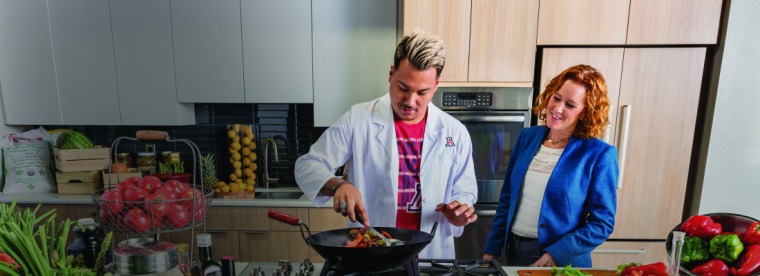

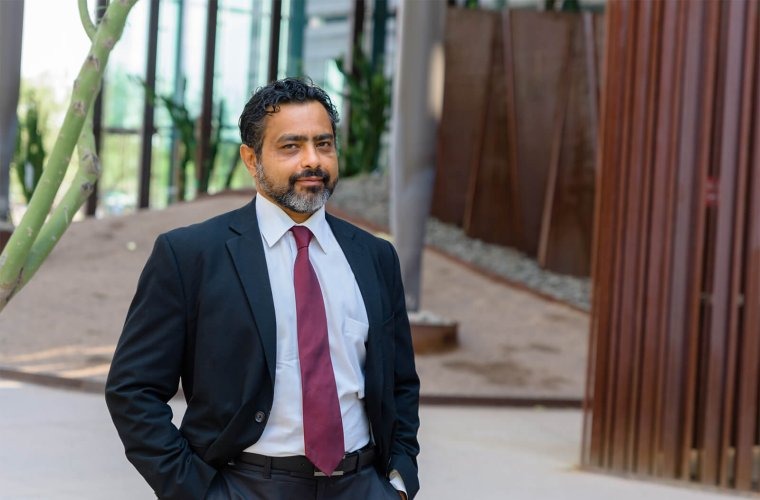
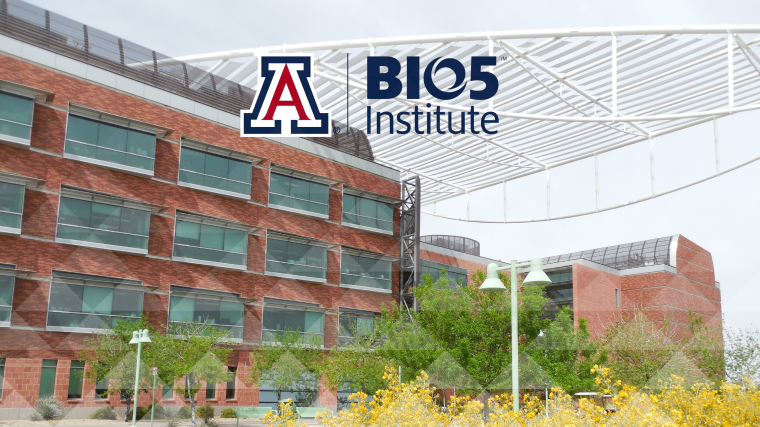
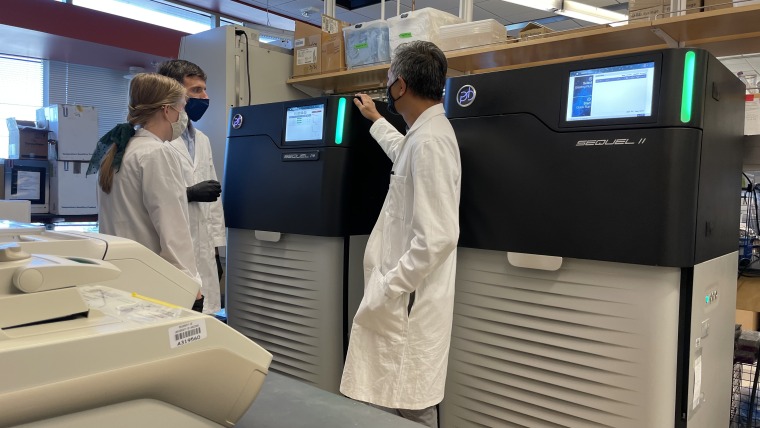
The Fourth Industrial Revolution envisions a union of the biological, physical and data sciences - a collaborative approach that has long been a hallmark of the BIO5 Institute at the University of Arizona. By deciphering the genetic code of all living organisms, researchers from various disciplines have the power to advance this new era of scientific discovery.
A newly acquired, revolutionary instrument will place the Arizona Genomics Institute at the forefront of the ever-changing landscape of genetic code sequencing. The state-of-the-art Pacific Biosciences Sequel IIe sequencing machine will not only enable AGI to serve more clients across the state, but it will provide greater insights into gene sequence and function.
“Sequencing capacity was a bottleneck that AGI had been experiencing for months,” said Dr. Dario Copetti, Associate Director of AGI at the BIO5 Institute. “When we only had one machine, many researchers were stuck waiting in the queue.”
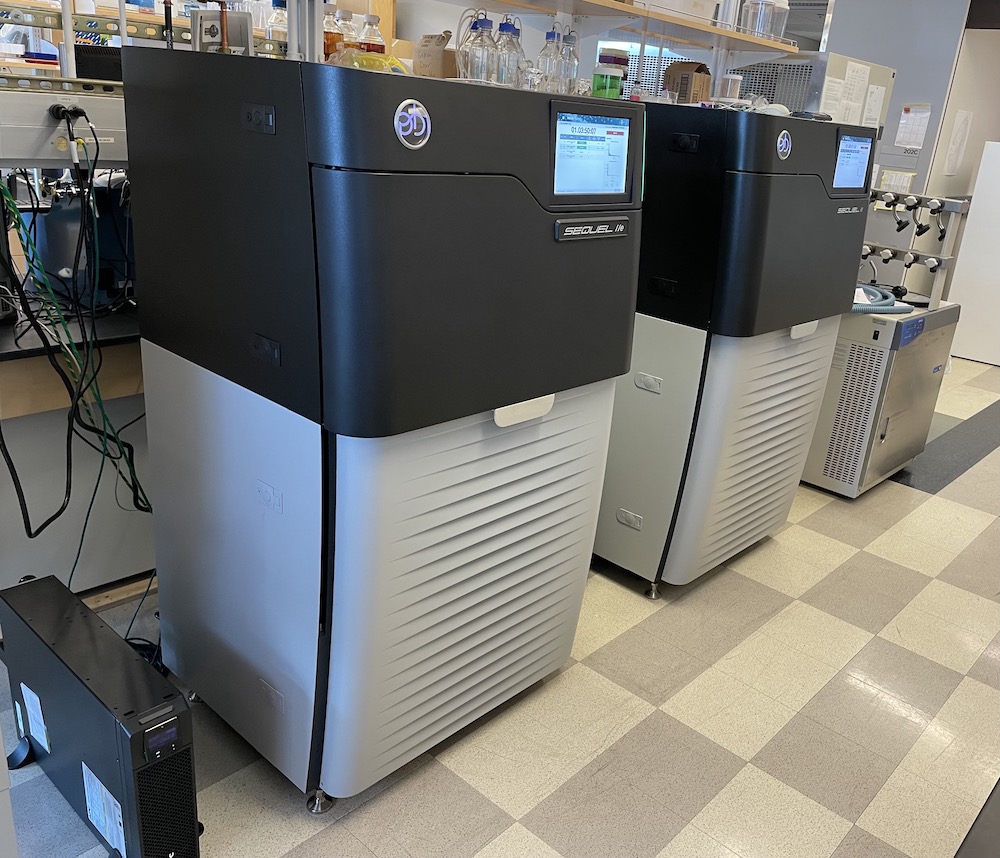
New sequencing machines like Sequel IIe can cost more than half a million dollars. In addition to the College of Agriculture and Life Sciences, the BIO5 Institute helped remove the expensive bottleneck with a grant from their Equipment Enhancement Fund, grants intended to support collaborative research and facilities that are key players in the Fourth Industrial Revolution.
Led by Dr. Rod Wing, professor and CALS Bud Antle Endowed Chair for Excellence, AGI has strived to decipher genetic information in all living organisms since its inception in 2002. While their initial focus was on rice and other crops, the institute has expanded its services to other plant and animal species with the adoption of equipment from PacBio starting in 2014.
Unlike traditional sequencing methods, PacBio’s instruments are unique in that they achieve a “sweet spot”: other platforms either sacrifice accuracy for read length or vice versa, but PacBio’s machines deliver highly accurate yet long reads, providing deeper biological insights to keep UArizona at the forefront of genetic sequencing. The new instrument also boasts a larger computer, increasing the speed of data delivery.
By removing the capacity bottleneck, AGI aims at serving more of the research community at UArizona and across the state, particularly in the medical fields.
AGI is also a trailblazer in DNA extraction and purification – methods essential to providing the proper starting material for the sequencing machines.
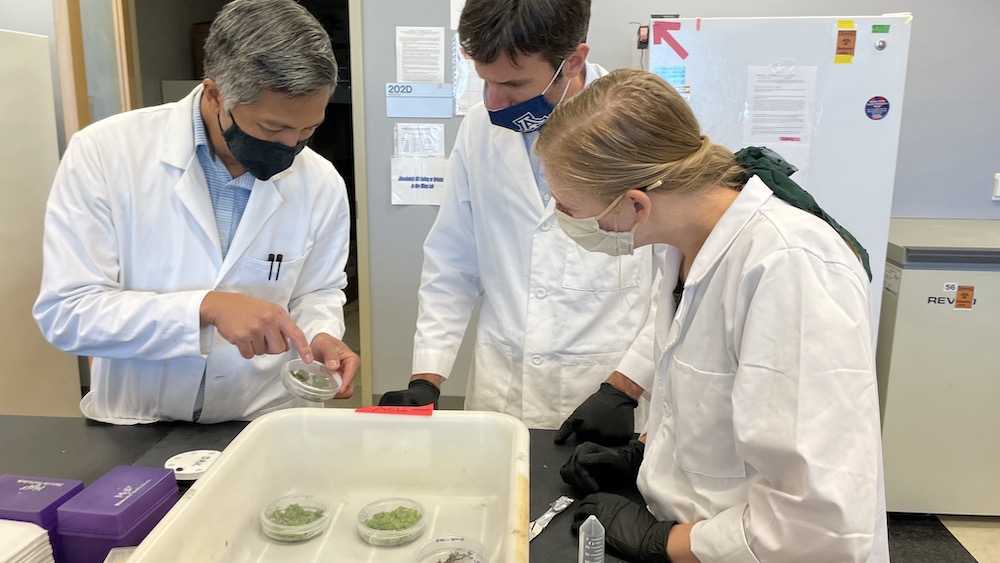
“Rod’s craftsman purification techniques are the thread that connects the history of AGI,” said Copetti. “At the beginning of the genomics era in the late 90s, his lab was always at the forefront of research, and his legacy continues to be leveraged worldwide, even as sequencing technologies rapidly change.”
AGI and PacBio will host an event for universities and private companies across the state at the Keating Bioresearch Building on November 16. The three-hour program will feature talks from Copetti and PacBio about AGI’s services and the myriad applications of PacBio’s sequencing technology.
“With this event, we hope to bring more awareness to what we can do and how the technology we have can benefit everyone’s research,” said Copetti. “Our goal is to show that our capabilities extend past plant sciences, ecology and evolutionary biology, going towards molecular and cellular biology, medical and veterinary sciences, as well.”
BIO5 member Dr. Monica Schmidt, associate professor of plant sciences, applied biosciences and genetics, will also share how her research has been improved by AGI’s PacBio technology. Schmidt’s laboratory is interested in enhancing the overall protein content of seed crops, with particular interest in the soybean, to help feed the growing world through plant-based protein sources.
Her team developed a fluorescent soybean line and then mutated it to create numerous lines with varying protein contents. Those that glowed more brightly indicated greater protein.
Schmidt utilized AGI’s PacBio technology to create a reference genome of the fluorescent line from which she can compare high protein to know exactly what changes were made that might be contributing to the nutrient content – knowledge that will be important when developing breeding and transgenic efforts to popularize a high-protein soybean line.
“Using the PacBio technology, we have assembled the first gap-free soybean genome,” Schmidt said. “Their sequencer provided us with the highest resolution you can get from a genome map.”
The program will conclude with a presentation on medical field applications of the new sequencer, followed by a networking lunch to inspire scientific collaboration. PacBio and AGI will also host a SMRT Grant competition through which researchers can win funding to cover sequencing costs through AGI.
For more information about the AGI/PacBio event, please visit: https://events.pacb.com/pacbioseminar-agi
About the University of Arizona BIO5 Institute
The BIO5 Institute at the University of Arizona connects and mobilizes top researchers in agriculture, engineering, medicine, pharmacy, data and computational science, and basic science to find creative solutions to humanity’s most pressing health and environmental challenges. Since 2001, this interdisciplinary approach has been an international model of how to conduct collaborative research, and has resulted in disease prevention strategies, innovative diagnostics and devices, promising new therapies, and improved food sustainability.
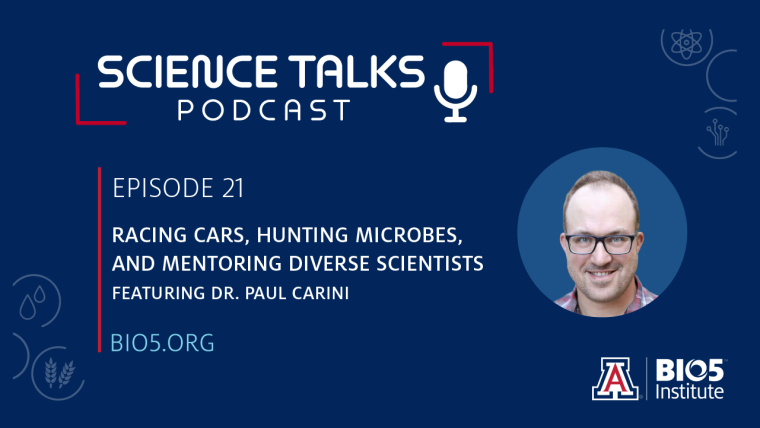
Microscopic organisms were the earliest forms of life on earth. To this day, it's estimated there more than 1 trillion species of microbes that inhabit our soil, water and air.
Self-proclaimed at microbe hunter Dr. Paul Carini, assistant professor of soil/subsurface microbial ecology, genetics and plant sciences, talks with Dr. Brittany Uhlorn about his path to microbiology, the importance of microbes, and how he supports diversity in STEM.
How did you wind up in science?
I've always had an urge and desire to do science. I have a Dr. Seuss book from when I was six, and there's a page that says, “When I grow up, I want to be…” and I had written in Crayon, “scientist.” I also have a photo that my mom still cherishes of me holding a junior microscope as a seven-year-old.
We grew up next to a field that was next to a tavern, and the patrons of the tavern would eat chicken wings. The bones would make their way into this field and be buried, so I would dig them up with my little shovel because I’d think they were dinosaur bones.
When I was 15, I was playing a game of pickup football and ended up tearing my ACL. Since I spent a lot of time with physical therapists, when I went to college, I wanted to be a physical therapist.
I’m a first-generation college student, so I didn't really understand what a master's degree was but needed one to pursue physical therapy, so I picked microbiology as my undergraduate major. In a class called cellular evolution, I thought, “Oh, I could do microbiology forever.”
My mind exploded in that class with all these cool ideas, and all this stuff that was unknown about how microbes evolve, how they survive hostile environments, the origins of life, and the origins of eukaryotic cells that we are made of.
At that moment I decided to pursue microbiology.
Your lab is interested in deciphering how microbes make earth habitable for humans. Tell us a bit more about your research and how these microorganisms are important to supporting our lives.
If we start with our bodies, microbes are on and in us, and most of them help keep us healthy. Some also cause disease, but that's a very small portion of them.
If we go outside of our body, there are microbes all over our environment, like in our bathrooms and in the air we breathe. Those microbes usually come from the soil where they're released as part of their natural ecology. In two tablespoons of soil, there is many microbes as people on earth, and there's as many species of microbes in that two tablespoons of soil as there are bird species on earth. These are tremendously diverse living ecosystems that affect plant productivity and maintain crop and soil fertility.
They are rich sources of antibiotics and other therapeutic agents - there's a compound called rapamycin that has been linked to longevity that's produced by a soil microbe. And, of course, they balance these critical nutrient cycles, the most important one being the carbon cycle.
If we get in a boat out into the open ocean, and you take a deep breath, about half of the oxygen from that breath comes from phytoplankton in the open ocean. The rest of the microbes in the ocean helps support that system by recycling other nutrients that those oxygen producing microbes need in order to grow.
We dabble a little bit and all those things - we're working on a project right now trying to understand how gut microbes may mitigate arsenic toxicity. There's a lot of arsenic exposure resulting from mining in Arizona, and some of that arsenic gets ingested by the populations that live near these mines. We would like to understand if the microbes in the gut are influencing the toxicity of that arsenic to the host.
We also do work in soil trying to understand how microbes in the desert survive very long periods of time without water, and we’re interested in marine microbiology, particularly how very slow growing microbes are able to persist for very long periods of time without a lot of food available to them.
Let’s talk a bit more about the makeup of your lab – you’re interested in training diverse scientists. Why is it important to you to support diversity, and how do you achieve diversity in STEM?
STEM research has traditionally focused on issues that were deemed important by the people that were doing the research. Historically, and even today, that's enriched in white men and largely excludes the issues that are important to other groups like Indigenous populations and Black or Hispanic groups.
It's critical to train those diverse scientists so they can be in those decision-making processes that impact the communities that they live in and affect change on as many groups as possible.
The only way to do that is to train those individuals and to be welcoming and supportive in the ways that they need to be welcomed and supported, which are going to be different than other populations.
We've tried to put in systems that promote diversity in our lab group, starting from the moment we decide to hire someone and going all the way through when we when they leave the lab. Our systems are meant to minimize unconscious bias in the review and evaluation stages of hiring someone, acknowledging that there are different ways to be successful, and then creating structure around trying to identify those different ways and promoting them.
Everyone comes in with different perspectives and life experiences, and you try to meet them where they're at and work together to have them grow and reach higher heights of what they're potentially capable. We want them to give their best and shine their light on the research projects that they do with us, and hopefully leave in a better place than they were when they started.
It could get easy as a scientist, especially for someone who's running a lab and mentoring, to get trapped in their work. Talk to us about work-life balance.
That was largely learned it during the pandemic…I think that was a real big struggle, not just for me, but for everybody, the last year and a half.
I realized that if I’m not starting to take care of myself, I’m not going to make it very far. I really had to put that energy on making sure that I was well, so I could provide for my lab group, for the research, for the university, and for my family.
I’ve not always had a great work life balance, but over the last year and a half there's been a pretty good change and I don't think I could go back to the way I was doing things before.
About the University of Arizona BIO5 Institute
The BIO5 Institute at the University of Arizona connects and mobilizes top researchers in agriculture, engineering, medicine, pharmacy, data and computational science, and basic science to find creative solutions to humanity’s most pressing health and environmental challenges. Since 2001, this interdisciplinary approach has been an international model of how to conduct collaborative research, and has resulted in disease prevention strategies, innovative diagnostics and devices, promising new therapies, and improved food sustainability. Learn more at BIO5.ORG.
LAND ACKNOWLEDGEMENT We respectfully acknowledge the University of Arizona is on the land and territories of Indigenous peoples. Today, Arizona is home to 22 federally recognized tribes, with Tucson being home to the O’odham and the Yaqui. Committed to diversity and inclusion, the University strives to build sustainable relationships with sovereign Native Nations and Indigenous communities through education offerings, partnerships, and community service.
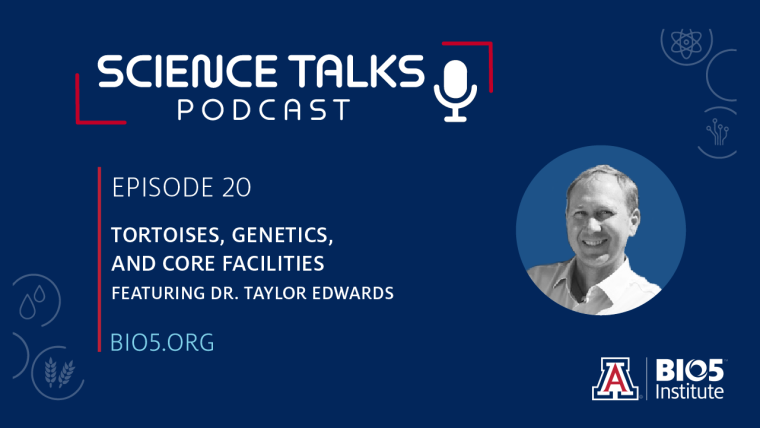
Transdisciplinary research unites researchers from different backgrounds to integrate and move beyond discipline-specific approaches to address today’s grand bioscience and biomedical challenges. Dr. Taylor Edwards, clinical manager and development scientist at the University of Arizona Genetics Core, shares how the UAGC core facility brings together researchers and samples from across the university to tackle projects spanning COVID-19, environmental science, and more. Though the projects vary, Edwards says that a common theme of DNA unites them.
You’ve had a lot of roles, including herpetologist, geneticist, lab manager, conservationist, biologist, educator, and artist. What drew you to your current career and sparked your interest in transdisciplinary work?
Many years ago, when I started, there was no such thing as transdisciplinary science. Now, it's a goal to try to achieve. As I've worked over the years, I realized that the more people I have on my team with different perspectives and different ideas, the better we can do applied science and get it to more people. I have much more power and success through collaboration.
My career first started working with in wildlife biology. The first thing that brought me into it was volunteering at a zoo in high school and wanting to save endangered species through captive breeding programs. I got my degree in zoology, and my first job outside of my undergraduate was actually at the Arizona Sonora Desert Museum, where I worked in the Mexican Wolf reintroduction program. That's what drew me into field biology.
Then, I started having questions that I couldn't answer by being out in the field with animals. That's when I first started working with genetics and came back to the U of A for my master's program. There was no genetics program or natural resources department at that time, but I stumbled upon what is now the UAGC where I could actually learn these techniques and apply them to my own work as a master's student.
UAGC is what we call a core service. What does a core service like UAGC mean for our university and state?
Core facilities are a group that's able to help facilitate the research that goes on both within the U of A and outside of that. We run the expensive instruments that do DNA sequencing and genome sequencing, and we have the expertise and technicians that can help researchers with those kinds of problems. We get people coming to us who are experts in their field, and they may want to add a genetic component to their research, but maybe they haven't worked with genetics directly before, or maybe they don't know which is the right platform in order to do the research study – we’re able to help them.
It's not necessary for every lab to have a $500,000 instrument to do this kind of stuff, whereas a core facility, we can have a specialist running that instrument for a hundred different labs, essentially generating data all the time that helps fuel the research.
How have you seen sequencing technology evolve over the years, and how has that enabled you all to be intimately involved with the COVID-19 research efforts and the larger university pandemic response?
Biotechnology is such a fast-moving technology. That's one of the things that's kept me interested so long. The new sets of tools allow me to ask new questions that I never even thought were possible.
Around 2000 when I entered my master's program, they announced the first draft of the human genome that took 10 years to assemble. I was just looking at simple molecular markers in tortoises for the first time - never in my life did I think we'd have tortoise genomes, but now I'm an author on some tortoise genomes as well. The technology has changed that far in those number of years.
As that, as that technology changed, I found myself wanting to keep up with it because there was a whole new world of things to answer. I ended up doing my doctorate program while an employee of UAGC because I was continuing to do my own research on tortoises. I realized I needed to apply this new technology to my own research, but I also needed to learn the best ways to do it.
One of the aspects about a core facility that’s also kept me going is the collaboration. You’re not just working on what you’re interested in, but you're working with researchers from health sciences, life sciences, public health, and everywhere in between that come to ask questions that we can help facilitate. Over the course of a day, I might be working with a student who wants to do environmental sampling to look at fish DNA in a freshwater lake. Then the next thing I'm doing is developing a clinical test to monitor bone marrow engraftment.
It's pretty amazing, but it's all DNA. It's all using the same basis for understanding, and then applying it to lots and lots of different questions.
UAGC was awarded the 2021 University of Arizona Team Award for Excellence, specifically in your engagement with the COVID-19 testing team. Talk more about how your team pivoted to work with the pandemic.
It truly took a team to do this. My part in it revolves around by role as the clinical lab manager at the UAGC. We do clinical testing, which means we generate molecular DNA results that apply directly to patients so that physicians can use that information in the treatment or diagnosis. We were already able to do these kinds of things, so when the pandemic started early in 2020, our laboratory director Ryan Sprissler and I put together a letter to our administration saying, “We're not sure what's going to happen with the pandemic, but here are the things that we can do. Here are our capabilities.”
By the end of March, we were in a real emergency, so that's when we first started to develop our real-time PCR assay for COVID diagnosis. Initially, it was an odd time - our biggest challenge was getting positive samples because it was new. We were working with other facilities and collaborating with other institutions in order to get those samples so that we could validate our own laboratory developed test for the COVID testing. That then led to also doing antibody testing for the lab.
We have amazing expertise here at the University of Arizona to be able to work with immunologists who are specialists in this kind of thing. Using the ELISA assay they developed, we were able to also turn that into a clinical test and continue doing antibody testing for the whole state of Arizona. I was fortunate because I got to work with some of my favorite friends and colleagues at U of A. We already had the experience and instrumentation for doing large scale projects, but we each have our own specialties.
Bringing together all our resources and infrastructure made me so proud of the University of Arizona. Everybody just stepped up and did their part - from the electronic systems that we do our orders, to the supply chain, to the knowledge from our scientists that are experts in this field working late into the nights and on weekends, trying to get these things developed. It was an exciting, amazing time, and it felt good knowing we were working towards something that was positive and would get us through this challenging time.
Talk a little bit about how you include the educational piece of the BIO5 mission in your work.
UACG has always been very forward with mentoring and having students in the lab, I think because a lot of us, including myself, have had those experiences of being a student who's had doors open for them because of mentorship. It's been harder as I've gotten more advanced in my position because I'm less hands on with the students, but it's always a pleasure when I get to do that.
Because we're a production facility, it's a little bit different experience for some of the students here, but it does open up doors that they probably didn't expect what happened. We've had so many students through the years - we have a whole poster board with all their pictures. It's fun to keep in touch with them and see what they're doing now, where they've moved, and how their career paths changed as a result of working with us.
UAGC and your work are great examples of the intersection of science and business. How do the two go hand in hand?
In doing the sort of applied research that we do, a business model is good because it keeps you efficient and on target in a very defined sort of way. For my personality and my goals, it's sort of fit right in with the way a core facility operates as well as making sure that the work I do as an individual gets applied and manifests into something real that that can be put out into the world.
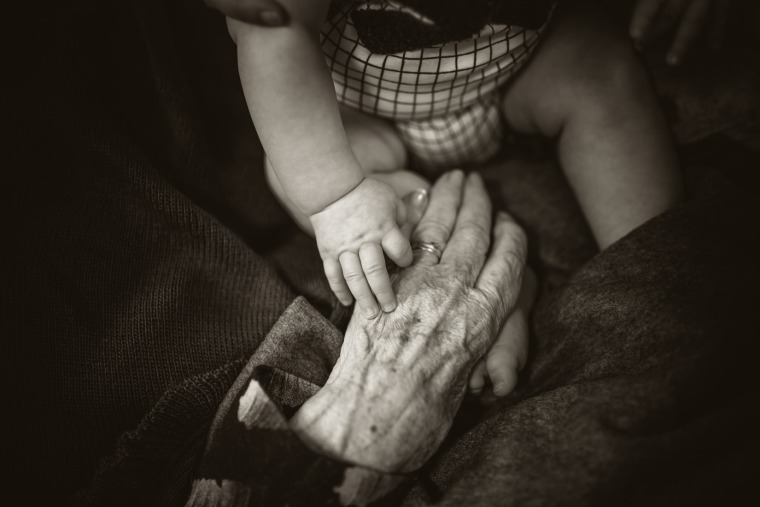
Nearly one quarter of the global disease burden is attributed to the elderly - a group expected to more than double by 2050.
Researchers at the University of Arizona’s BIO5 Institute are exceptionally poised to understand the processes of healthy aging, determine the causes of age-related diseases, develop life-changing therapeutics, and maximize independence for higher quality of life.
Molecular drivers of aging hold the keys to extend healthy human lifespan and both delay the onset of and develop targeted therapeutics for age-associated diseases. Dr. George Sutphin, assistant professor of molecular and cellular biology, neuroscience, cancer biology, and genetics, integrates systems biology, comparative genetics, and molecular physiology to identify new genetic and environmental factors in aging and characterize their roles in age-associated diseases
Some changes to the brain are expected with aging, like mild decreases in memory, multitasking, and attention span. Despite these common changes in cognition, many older adults develop debilitating neurological diseases such as Alzheimer’s and Parkinson’s.
Dr. Carol Barnes, director of the Evelyn F. McKnight Brain Institute, pioneers the field of precision aging and brain health. By understanding how the brain changes with age, scientists and clinicians can better assess functional impairments on information processing and memory, ultimately leading to better prevention and therapeutic strategies.
Like the brain, our bones also deteriorate over time, especially for women. Dr. Zhao Chen, department chair of epidemiology and biostatistics in the Mel & Enid Zuckerman College of Public Health, has contributed to osteoporosis prevention through her findings on body composition changes with intervention and aging. Dr. Chen, a professor of anthropology and statistics, also investigates bone strength and skeletal muscle losses associated with aging, as well as hormone and calcium/vitamin D interventions.
The body’s immune system similarly weakens with age, increasing the vulnerability to infections and cancer. Co-director of the Arizona Center on Aging and immunobiology department head Dr. Janko Nikolich-Žugich addresses the intersection of aging and immunity from three main angles. 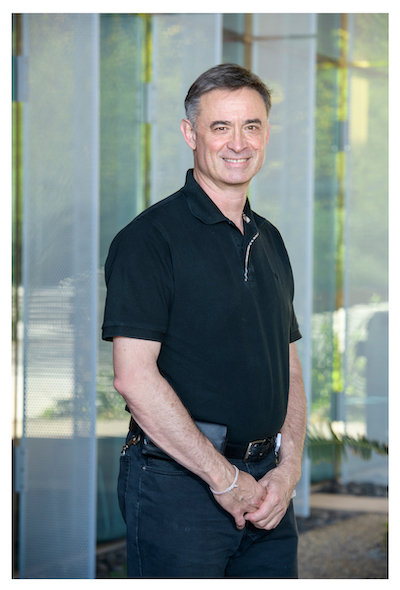
First, the physician-scientist studies how the immune system changes over one’s lifespan, and how those changes affect our interactions with microbial pathogens. Dr. Nikolich-Žugich and his team have discovered degenerative changes that adversely affect production and maintenance of immune cells. Moreover, they’ve found multiple defects in sensing and response to bacteria and viruses, leading to impairment in the activation of the immune system. These findings are a springboard to correct the age-associated molecular and cellular defects with novel targeted strategies.
To address the causes and consequences of whole-body inflammation in aging, Dr. Nikolich-Žugich integrates information from the immune system with gut function, cellular metabolism and energy sensing. He aims to determine whether scientists and physicians can intervene against diseases of aging and, perhaps normal aging itself, by modulating inflammation.
“Inflammation is a protective process if deployed immediately and extinguished quickly after the infection is gone. But if it lingers and is not extinguished, it becomes one of the worst enemies of healthy aging, making most, if not all, chronic diseases worse,” said Dr. Nikolich-Žugich, also a professor of medicine, nutritional sciences, genetics and neuroscience.
Based on this, Dr. Nikolich-Žugich is devising anti-inflammatory interventions to extend longevity. Once he understands the molecular basis for end-organ function and factors that lead to diminished quality of life, the physician-scientist will implement a drug discovery program to optimize treatments to prolong life.
Dr. Richard Simpson, associate professor of nutritional sciences, pediatrics and cancer biology, focuses on the effects of aging, stress and exercise on the immune system. Through his translational research, Simpson, also an associate professor of physiological sciences and immunobiology, aims to discover how exercise and other behavioral interventions offset age-related reductions in immune system functioning.
Dr. Purnima Madhivanan, associate professor of public health, studies the protective effects of yoga on elderly health. Current lifestyle intervention approaches are poorly suited to older patients with multiple, co-occurring, and inter-related health conditions. Madhivanan believes that comprehensive, holistic approaches that improve physical, emotional and mental well-being are better suited for an aging population.
To address this unmet need, Madhivanan is adapting Senior Yoga, an evidence-based mind-body lifestyle program, for primary care settings in India and Tucson. Her studies will provide a better understanding of interventions that reduce the burden caregivers experience to improve the health of the aging patient.
About the University of Arizona BIO5 Institute
The BIO5 Institute at the University of Arizona connects and mobilizes top researchers in agriculture, engineering, medicine, pharmacy, data and computational science, and basic science to find creative solutions to humanity’s most pressing health and environmental challenges. Since 2001, this interdisciplinary approach has been an international model of how to conduct collaborative research, and has resulted in disease prevention strategies, innovative diagnostics and devices, promising new therapies, and improved food sustainability. Learn more at BIO5.ORG.
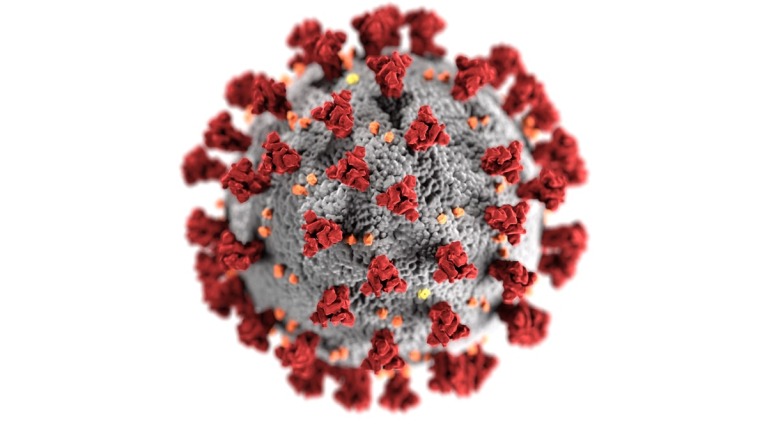
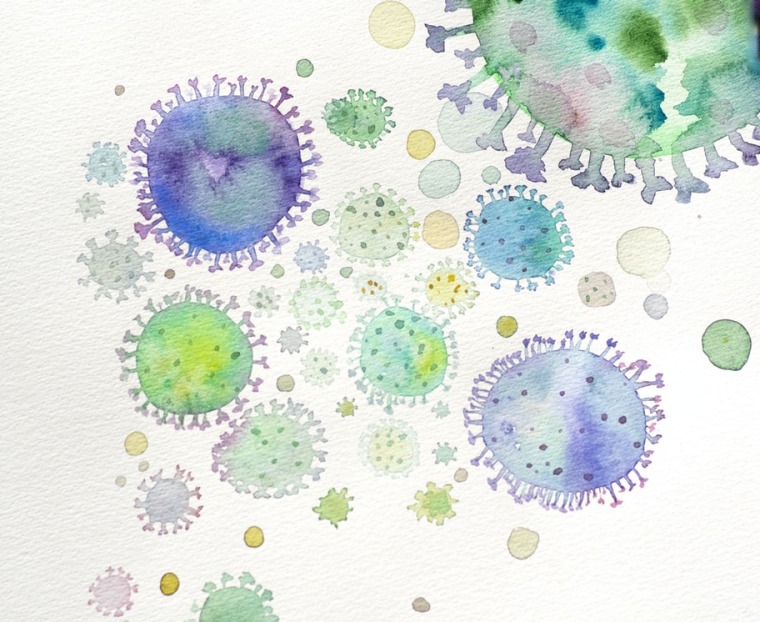
A relic is left behind after something decays or disappears. Dr. Paul Carini, assistant professor of environmental science, describes how the DNA left behind by microbes after they die affects the ability of scientists to characterize microbial communities.
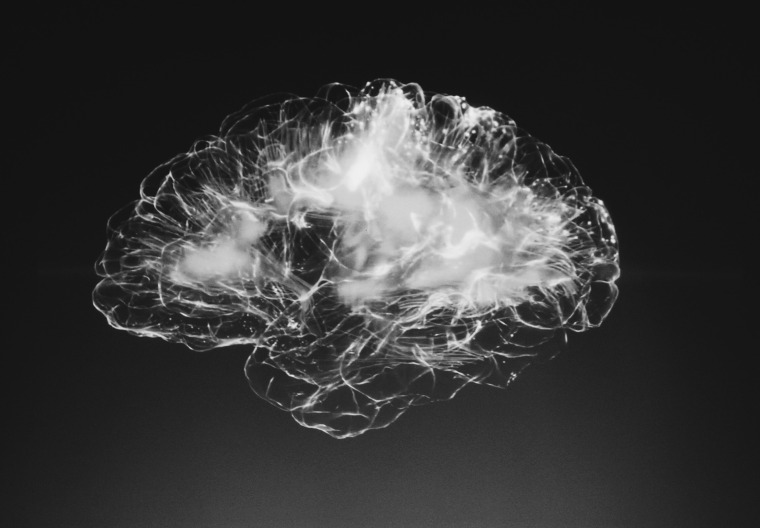
Dr. Martha Bhattacharya, a UArizona assistant professor of neuroscience and BIO5 member, discusses her research, her career, and her mentor-ship philosophies with the Daily Wildcat. Dr. Bhattacharya's lab recently linked a gene involved in neurodegeneration to the itch sensation that many mammals experience and has drawn interest from the agribusiness industry for her lab's discovery. In future studies, Dr. Bhattacharya hopes to characterize the role of this gene in our understanding of these itch-sensing pathways in adults.